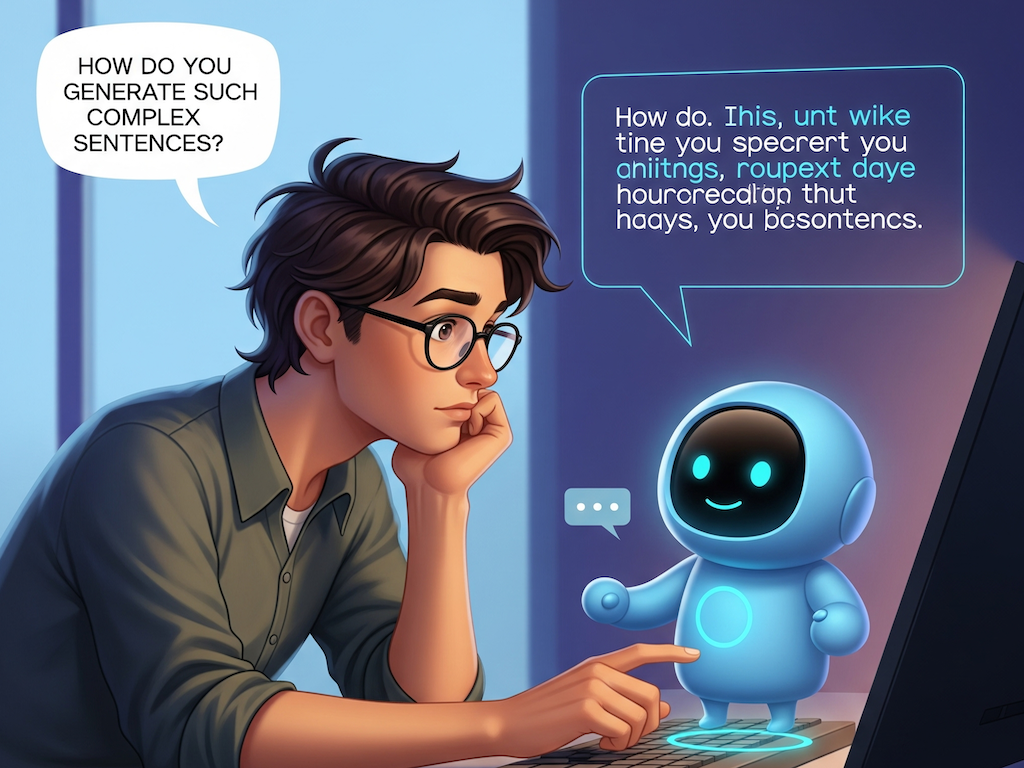
How Does Generative AI Put Together a Sentence?
We use AI every day — in our phones, in search engines, even when writing emails. But have you ever paused to wonder how it actually forms a sentence? It may seem like magic, but there’s a sophisticated system behind every phrase it generates. What looks like effortless writing is actually the result of complex training, pattern recognition, and a deep understanding of how language is used — all without the AI truly “understanding” anything at all.
Learning Language Like a Human — But Without Feelings
Generative AI doesn’t understand language the way humans do. It doesn’t have emotions, experiences, or common sense. What it does have is the ability to recognize patterns — lots and lots of patterns. During training, AI models read through billions of sentences from books, websites, articles, and more. From this, they learn grammar, vocabulary, tone, and structure through statistical patterns — not personal meaning.
Imagine learning to speak by reading every book in a library, but never living a day in the real world. That’s how generative AI learns — purely through language data.
The Role of Grammar, Synonyms, and Punctuation
Grammar is one of the most basic things AI learns. Not through memorizing rules, but by seeing which word combinations occur most often. For example, it learns that “the cat is” is far more common than “cat the is,” and concludes that the first is correct.
It also picks up on synonyms and antonyms based on context. If the word “happy” frequently appears in places where “joyful” also appears, it learns they mean something similar. If “happy” and “sad” appear in opposite kinds of sentences, it detects that they’re antonyms — opposite in meaning.
Punctuation, too, carries clues. An exclamation mark might suggest excitement or urgency. A question mark signals a query. AI learns these patterns and adjusts its tone accordingly, even if it doesn’t truly feel anything.
Enter Transformers — The Game-Changer
At the heart of modern generative AI is a powerful technology called the transformer. Unlike older models that read sentences one word at a time, transformers can look at an entire sentence — or even a paragraph — all at once. This allows the AI to understand how each word relates to every other word, even if they’re far apart.
For example, in the sentence “The girl who won the spelling bee was proud,” the word “was” connects to “girl,” not “bee.” A transformer can spot that relationship and keep the sentence meaningful.
Transformers also allow for something called attention, which lets the model focus more on important words. It’s a bit like how your brain pays more attention to key words in a conversation while tuning out the noise.
Predicting the Next Word — Not Understanding It
When AI writes, it doesn’t plan ahead like a human. It simply predicts the most likely next word, one after another. If the sentence so far is “I’m going to the,” the model might predict “store” based on how often that phrase appears in its training data. Then it continues: “I’m going to the store to buy…” and so on, building a sentence one prediction at a time.
It’s like a supercharged autocomplete system — but trained on the entire internet.
Sarcasm and Nuance — Still a Challenge
While AI has made amazing progress, it still struggles with things like sarcasm, humor, and subtle emotional cues. Humans can detect sarcasm because we mix tone, body language, and experience. AI, on the other hand, relies only on text patterns — and sarcasm often breaks those patterns.
So if you say, “Great, another rainy day,” a human might hear the frustration. AI might just take it literally, thinking you’re celebrating the weather.
The Future: Beyond Transformers?
Newer AI architectures like Mamba are exploring alternatives to transformers. Mamba processes text more like a stream, handling one piece at a time in order, rather than all at once. This makes it better suited for very long documents or conversations, where keeping track of earlier context is key. It’s still early, but these models could push the boundaries even further.
In the end, generative AI doesn’t write with intention — it writes with probability. Every sentence it creates is the result of learning from vast amounts of text and applying mathematical rules to predict what comes next. The more it trains, the more fluent it becomes — but it still doesn’t know language the way you do.
